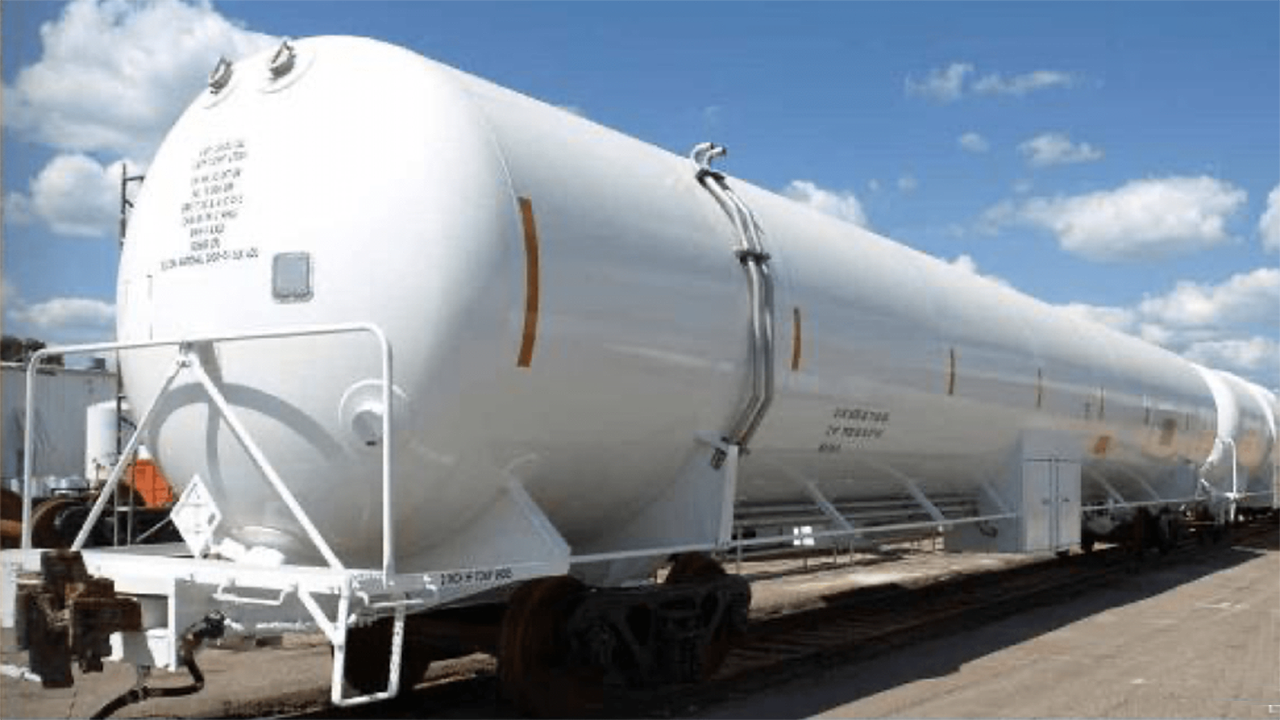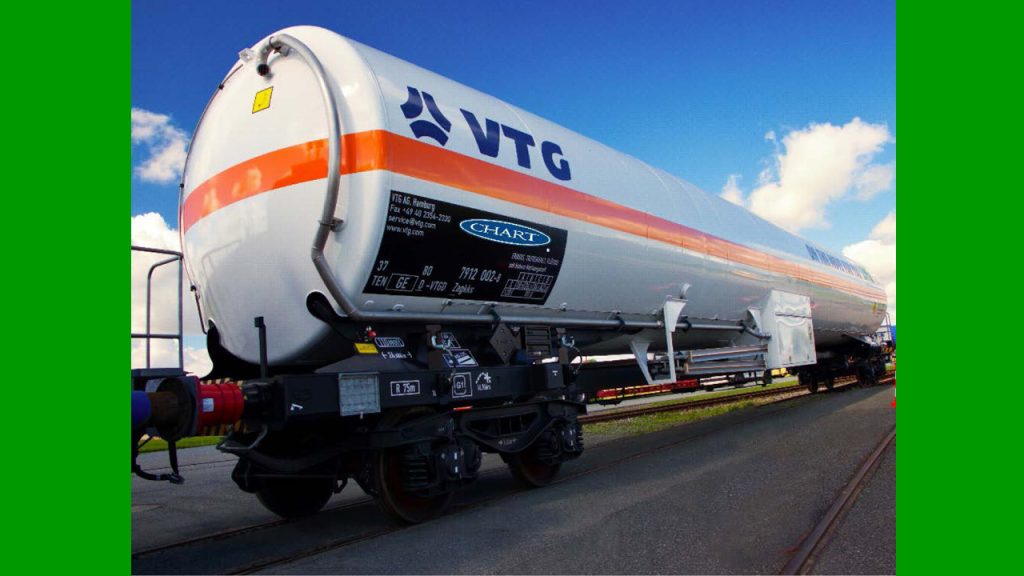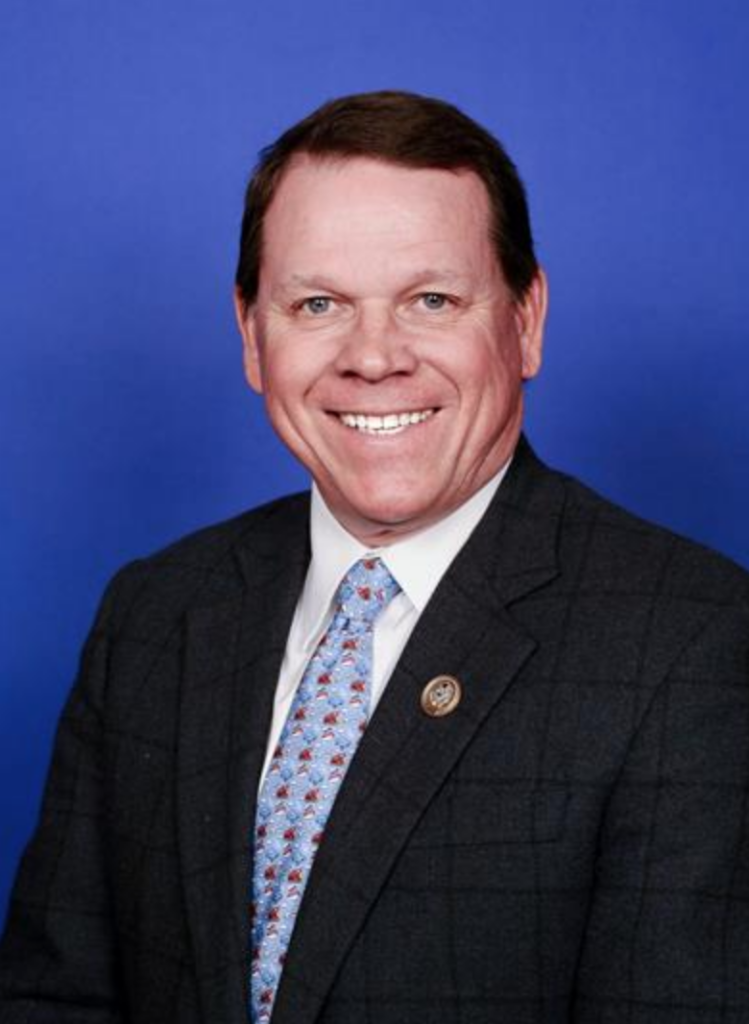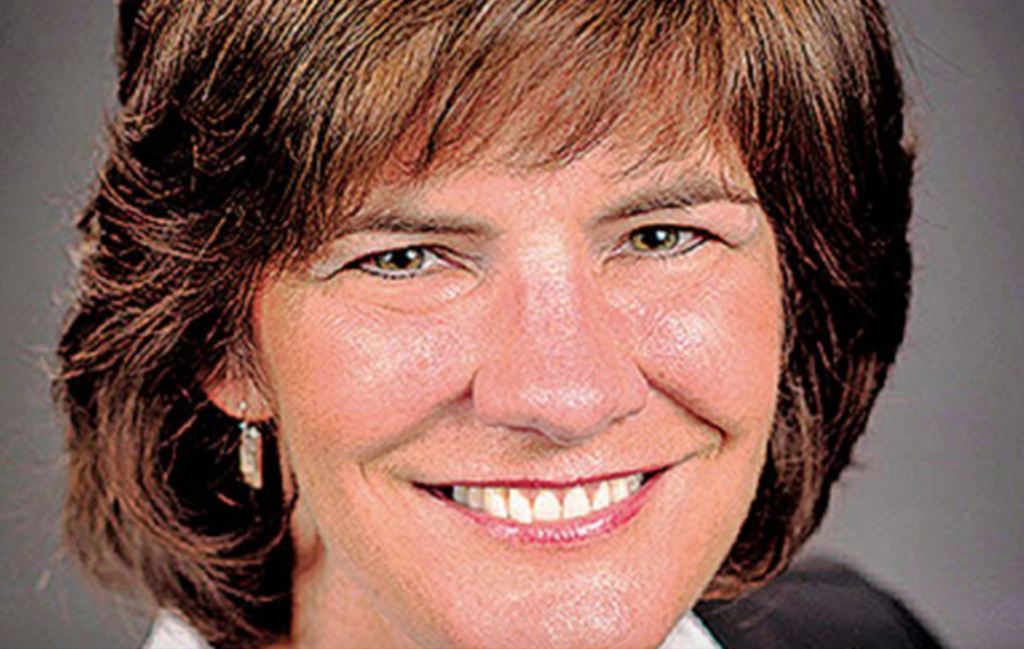
LNG by Rail: Temporary Reg Rollback Under Review
Written by Marybeth Luczak, Executive Editor
DOT-113C120W9 LNG tank car. Chart Industries photo
The Pipeline and Hazardous Materials Safety Administration’s (PHMSA) proposed temporary suspension of its regulations authorizing the transportation of liquefied natural gas by rail have prompted not only the Railway Supply Institute to weigh in, but also the Republican members of the House Transportation and Infrastructure Committee and a coalition of attorneys general from 14 states and Washington, D.C.; all submitted comments on the agency’s Notice of Proposed Rulemaking released late last year.
PHMSA published the Notice on Nov. 8, 2021, pausing its final rule that amended Hazardous Materials Regulations (HMR) to allow the bulk transport of liquefied natural gas (LNG) in rail tank cars; comments were due Dec. 23, 2021. (Download the Notice below.)
The July 24, 2020, final rule authorized transporting LNG in DOT-113C120W specification tank cars “with enhanced outer tank requirements, subject to all applicable requirements and certain additional operational controls. The enhancements to the outer tank are indicated by the new specification suffix ‘9’ (DOT-113C120W9).” (Download final rule below.)
Before the 2020 rule was enacted, the HMR permitted rail transport of LNG only on an ad hoc basis, “as authorized by the conditions of a PHMSA special permit (49 CFR 107.105) or in a portable tank secured to a rail car pursuant to the conditions of an FRA [Federal Railroad Administration] approval,” explained PHMSA, noting that a “recent expansion in U.S. natural gas production has increased interest in a programmatic approach to using appropriately the nation’s rail infrastructure to facilitate efficient transportation of LNG.”
Changing Course
What prompted PHMSA to reverse course just over a year later? PHMSA, in coordination with FRA, is proposing a suspension “while it conducts a thorough evaluation of the HMR’s regulatory framework for rail transportation of LNG in a companion rulemaking under RIN 2137–AF54, and determines if any modifications are necessary,” the agency wrote in its 2021 Notice of Proposed Rulemaking. “Transportation of LNG by rail tank car has not occurred and there is considerable uncertainty regarding whether any would occur in the time it takes for PHMSA to consider potential modifications to the existing, pertinent HMR requirements. However, PHMSA’s proposed temporary suspension of the HMR provisions authorizing transportation of LNG in rail tank cars guarantees no such transportation will occur before its companion rulemaking has concluded or June 30, 2024, whichever is earlier …”
PHMSA explained that such a move will:
• Avoid “any risks to public health and safety or environmental consequences (to include direct and indirect greenhouse gas (GHG) emissions) that are being evaluated in the companion rulemaking and in ongoing research efforts undertaken in collaboration with FRA and external technical experts.”
• Assure “timely implementation of any mitigation measures and operational controls for rail tank car transportation of LNG identified in the companion rulemaking or those ongoing research efforts.”
• Reduce “the potential for economic burdens by ensuring that entities avoid ordering rail tank cars compliant with the current requirements when the companion rulemaking may adopt alternative requirements. …”
• Enable “meaningful opportunity for consideration of the perspectives of diverse stakeholders.”
PHMSA also pointed out that it “acknowledged in the [2020] LNG by Rail final rule that additional further data and knowledge (for example regarding potential benefits as well as safety and environmental risks) could make appropriate further mitigations for shipping LNG by rail tank car. The LNG by Rail final rule, RIA [Final Regulatory Impact Analysis], and FEA [Final Environmental Assessment] were candid about uncertainty in the future market demand for transportation of LNG by rail tank car, potential direct and indirect GHG emissions associated with authorizing LNG by rail tank car, and the adequacy of emergency planning and response resources.”
PHMSA wrote that it “sought to mitigate potential risks that were affected by those uncertainties by adopting certain requirements in the LNG by Rail final rule suggested by comments in the rulemaking docket. PHMSA also stated that it may adjust the HMR’s regulatory framework governing rail tank car transportation of LNG as more information became available from its oversight activities. In fact, PHMSA had already begun work within the [PHMSA- and FRA-established] LNG Task force on a comprehensive set of tasks directed toward refining PHMSA’s knowledge of the risks of rail tank car transportation of LNG when it issued the LNG by Rail final rule [see table below]. PHMSA also expected that it would have the benefit of the TRB [Transportation Research Board] committee’s study on LNG by rail that Congress had directed for the express purpose of informing pertinent PHMSA rulemakings. Lastly, PHMSA understood it would have time to amend the HMR to integrate insights from those research activities, as it could take time to build a fleet of dedicated DOT–113C120W9 tank cars, as stated in the RIA.”

However, PHMSA noted that “[u]ncertainty has persisted longer than expected because the COVID-19 public health emergency has delayed the completion of research efforts. … As explained in the TRB Phase I Report [released June 15, 2021, but expected on March 31, 2021], several of the tasks that had been scheduled for completion by early 2021 will not be completed before late 2021 or 2022. … Uncertainty also has increased because, while the TRB committee generally commended PHMSA and FRA’s efforts under the LNG Task Force, the TRB committee identified a number of information gaps in its and the LNG Task Force’s work that PHMSA was not aware of when it issued the LNG by Rail final rule. The gaps concern testing and the evaluation of public safety and environmental risks (e.g., relating to full-scale impact testing, pool fire testing, worst-case analysis, and quantitative risk assessment)—including testing on which PHMSA had relied in the LNG by Rail final rule. The data gaps identified by the TRB committee might have been resolved by this point in time, but they currently remain unresolved because of the disruptions caused by the COVID–19 public health emergency.”
The TRB committee also “identified opportunities to improve the work of the LNG Task Force in understanding the risks to the public, workers, and the environment from rail tank car transportation of LNG, which potentially could further reduce uncertainties in the future and put PHMSA in a better position to evaluate risks as it moves forward with its companion rulemaking.”
Additionally, PHMSA wrote, the TRB committee “emphasized the need for a robust understanding of the potential risks to public and worker safety arising from releases during loading, unloading, and transloading of LNG tank cars, and improved emergency planning and response training and resources, further underscoring the importance of PHMSA taking additional time to ensure it fully understands and considers uncertainties.”
The pandemic “and other developments have also exacerbated uncertainties in near- and long-term market demand for rail transportation of LNG bounding the potential benefits and risks to public safety and the environment from the LNG by Rail final rule,” PHMSA wrote. Consequently, it noted, “there is more uncertainty now than when the LNG by Rail final rule was issued regarding whether, when, and where rail tank car transport of LNG—and by extension, any potential benefits and public safety/environmental risks—will materialize.”
PHMSA did note, however, that if the proposed suspension is enacted, shippers may continue to seek authorization to transport LNG by rail in tank cars “pursuant to a DOT SP [special permit] issued by PHMSA or in portable tanks subject to an approval by FRA.”

Following are highlights of the Notice of Proposed Rulemaking comments from the attorneys general coalition (supportive) and the Transportation and Infrastructure Committee members and the Railway Supply Institute (both opposed).
State Attorneys General: Rule Based on ‘Flawed, Incomplete’ Safety Assessment
Supporting the PHMSA’s proposal is a 15-member state attorneys general coalition led by Maryland Attorney General Brian E. Frosh and New York Attorney General Letitia James.
Why? Because “(1) the 2020 LNG by Rail Rule was based on a flawed and incomplete safety assessment; (2) the Final Environmental Assessment accompanying the 2020 LNG by Rail Rule did not adequately consider upstream and downstream effects on greenhouse gas emissions; and (3) PHMSA did not consider the impacts of the 2020 LNG by Rail Rule on environmental justice communities,” they wrote in a Dec. 23, 2021, filing (download below).
“Accordingly, while repeal of the 2020 Rule would be the most durable corrective action, the States support prompt suspension of those regulations in the meantime. The States look forward to evaluating PHMSA’s forthcoming ‘companion rulemaking that will consider changes to the conditions under which LNG could be moved by rail, to potentially include additional safety, environmental, and environmental justice protections.’”

“Suspending the Trump Administration’s misguided LNG by Rail Rule is a step in the right direction,” Attorney General Frosh said during the announcement of the coalition’s filing. “Allowing these dangerous trains to travel along our freight rail network, much of which passes through minority and disadvantaged communities, would put millions of our states’ residents at risk while further fueling the climate crisis.”
The coalition also includes the attorneys general of Connecticut, Delaware, the District of Columbia, Illinois, Massachusetts, Michigan, Minnesota, New Jersey, Oregon, Pennsylvania, Rhode Island, Vermont, and Washington.
T&I Republicans: ‘Safer, More Efficient and More Environmentally Friendly’ Transport Mode
“Before the 2020 rulemaking, the only ways to transport LNG were by special permit issued by PHMSA for freight shipment, or by highway transport on large tanker trucks,” Transportation and Infrastructure Committee Ranking Member Sam Graves (R-Mo.); Railroads, Pipelines, and Hazardous Materials Subcommittee Ranking Member Rick Crawford (R-Ark.); and 18 additional Committee Republicans wrote in a Dec. 22, 2021, letter to PHMSA (download below). “The 2020 rule created an organized framework for PHMSA to authorize LNG transport by rail under hazardous materials regulations (HMR). We are deeply concerned about the Administration’s seemingly arbitrary and capricious decision to ignore this work and rescind this regulation so soon after it was finalized.”

The Committee members emphasized that the “DOT-113 tank cars used to ship LNG by rail have safely transported several other types of flammable cryogenic materials for years,” and the 2020 rule required these cars to “go beyond HMR and ensure they have a thicker outer layer made of steel with a greater puncture resistance so as to further prevent any damage if derailment were to occur, as well as other specific requirements to enhance safety.”
Additionally, LNG has been shipped “by marine vessels and trucks for over 40 years in the United States, and over 50 years internationally,” the Committee members wrote. “Over 435 million shipments of hazardous materials are transported every year under HMR and an average of only 20 hazardous material incidents have resulted in death and serious injury each year, most of which occur in the highway mode. Transportation by rail car will provide a safer, more efficient, and more environmentally friendly method of transportation for LNG.”
The members also pointed out that the use of LNG is “an environmentally friendly alternative” for energy consumption. Compared with “other sources of fossil fuel energy, especially foreign sources, LNG releases considerably fewer greenhouse gas emissions,” they wrote. “In light of our current rising energy prices, it is misguided for this Administration to so quickly rollback the 2020 rule that supports clean and safe energy infrastructure in our country. … Moreover, the need for increased energy access has not disappeared in this short time.”
RSI: ‘Far Better Alternative Than the Status Quo’
“The reality is that demand for natural gas is growing, so it’s important to have clear federal regulations in place allowing for LNG’s shipment by rail,” the Railway Supply Institute said in a Jan. 5, 2022, statement to Railway Age. “Trucks—which are already authorized to carry LNG—have a hazardous materials accident rate that is more than eight times that of railroads, despite roughly equivalent hazmat ton-mileage. So from a safety perspective, authorizing the transport of LNG by rail is a far better alternative than the status quo.
“Federal hazardous materials regulations already allow for the safe and efficient transport of cryogenic materials in DOT-113 tank cars, and PHMSA’s 2020 rule simply clarified that the transport of LNG by rail would be regulated the same way as other cryogenic materials.”

Railway Supply Institute President Patricia Long on Dec. 23, 2021, filed Notice of Proposed Rulemaking comments on behalf of RSI-Committee on Tank Cars members American Industrial Transport; CIT Rail; GATX Corporation; The Greenbrier Companies; SMBC Rail Services, LLC; Trinity Rail Group, LLC; and Union Tank Car Company. (Download comments below.)
In those comments, she underlined that:
• “RSI-CTC agrees with and supports PHMSA’s prior analysis that transport by rail improves safety and fuel efficiency, and decreases emissions associated with transporting LNG when compared to transportation by truck.
• “DOT-113 tank cars are specifically designed for the safe transportation of cryogenic materials like LNG and have a strong safety record in their more than five (5) decades of service.
• “The regulatory history of the DOT-113C120W specification indicates that DOT previously contemplated the use of this specification tank car for the transport of LNG and that the specification itself was designed to accommodate LNG.
• “Continued authorization of transportation of LNG by rail promotes harmonization as it aligns U.S. practices with those of Canada and Mexico. …
• “Authorizing transportation of LNG by rail promotes U.S. energy independence.”
Long also noted that “economic uncertainty in the LNG industry” is among the reasons for PHMSA’s proposal. “RSI-CTC is concerned about the potential precedent set by this proposed suspension should shifting market conditions (or general economic uncertainty around commodity demands) serve as the basis for unwinding PHMSA’s determination that a particular commodity may be safely authorized for transport under the HMR,” Long wrote. “Equally troubling is the potential precedent that PHMSA may simply suspend its rules authorizing the transport of a particular commodity while it evaluates whether to modify the HMR in the future. PHMSA’s approach here nearly presupposes the agency will amend the regulations governing transportation of LNG by rail in its forthcoming rulemaking, RIN 2137-AF54. This type of decision-making results in uncertainty for the regulated community if both shifting market conditions and future rulemaking activities may serve as the basis for suspension of current authorizations under the HMR.”
While “PHMSA cites concerns about the safety and environmental effects and risks of large-scale LNG transportation and wide-spread adoption,” Long noted, it “also asserts there have been no movements of LNG by rail pursuant to the 2020 Amendments. As such, PHMSA has adequate time to analyze the TRB’s [Transportation Research Board’s] research and determine whether it wants to pursue amendments to the existing rules without imposing a suspension of its current authorization.”
Finally, Long noted RSI-CTC’s concern that suspending the authorization for the DOT-113C120W9 specification tank car—“the most robust tank car currently available for the transport of cryogenic liquids”—could potentially hold back the cryogenic industry “from advancing safety and facilitating the use of the DOT-113C120W9 specification tank cars for other cryogenic material transport.”
In sum, Long wrote, “RSI-CTC remains committed to working with DOT to ensure the safe transportation of hazardous materials by rail.”
Notice of Proposed Rulemaking comments were due Dec. 23, 2021. PHSMA’s next move: comment review and a final determination. Stay tuned.



